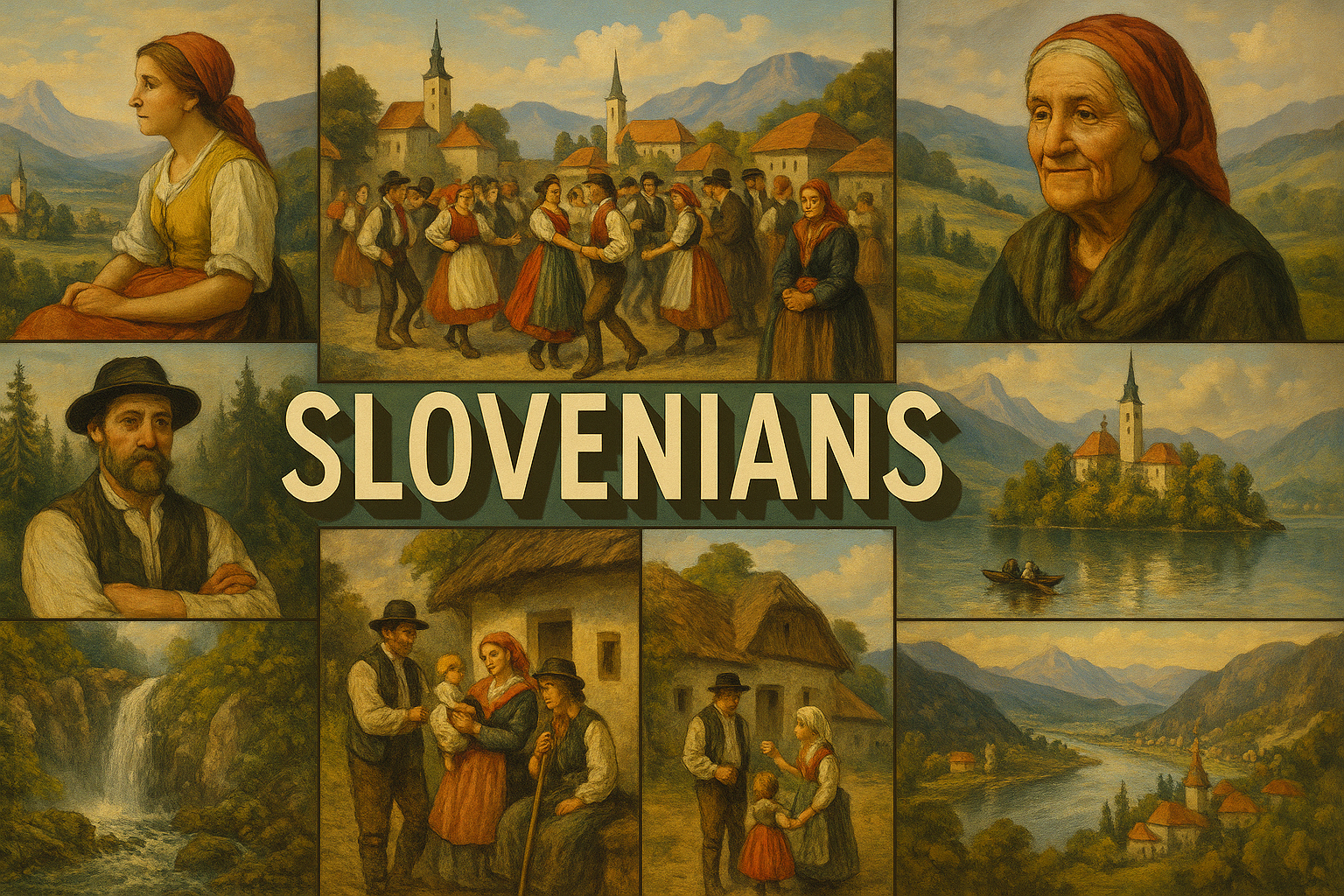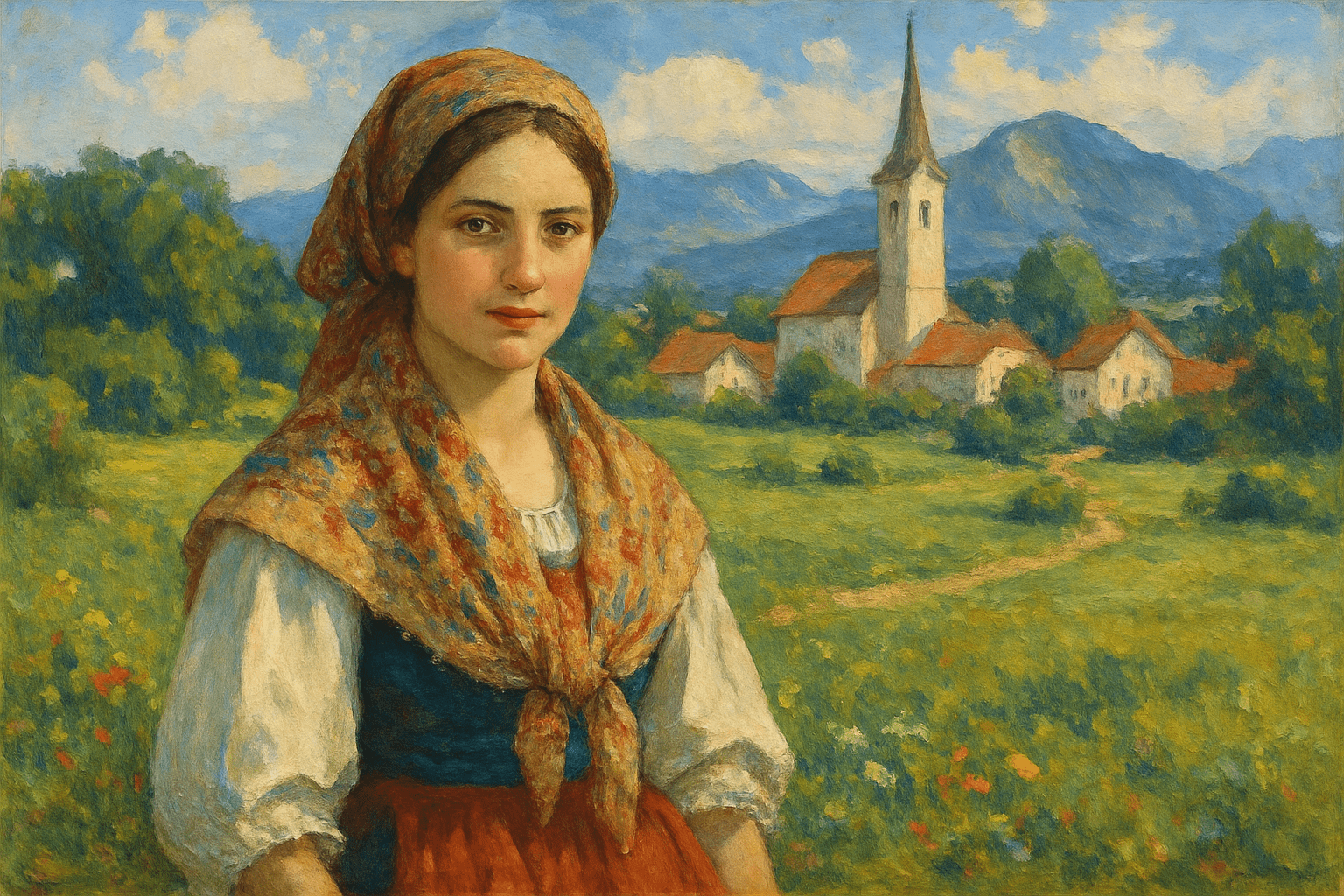
Slovenians
The art style of Slovenians is characterized by its use of bright colors and geometric shapes. Slovenian artists often use traditional motifs from their culture, such as folkloric animals and flowers.
AOI thinking about Slovenians [+_~]-/
Overview and Quickfacts
Slovenian art is a reflection of the country’s history and culture. Slovenian artists have been influenced by the country’s geography, as well as by the art of other European countries. Slovenian art is characterized by a strong tradition of figurative painting and sculpture, as well as by a more recent tradition of abstract and conceptual art.
Can understand it also, as:
Slovaks, Czechs, Hungarians, Austrians, Germans, Poles, Ukrainians, Russians, Belarusians, and Moldovans.
Categorize it as:
Impressionism, Modernism
.: Dreaming :.
holds a HAIKU for the art style
:. Thought is power .:
Detailed Description
Slovenian art is a reflection of the country’s history and culture. Slovenian artists have been influenced by the country’s geography and history, as well as by the art of other cultures. Slovenian art can be traced back to the Middle Ages, when the country was part of the Holy Roman Empire. Gothic art was particularly popular in Slovenia, and many Gothic churches and cathedrals can be found in the country. During the Renaissance, Slovenian artists began to break away from the Gothic style and adopt the more naturalistic style of the Italian Renaissance. Many Slovenian artists travelled to Italy to study the new style, and they brought back what they had learned to Slovenia. The Baroque period was a golden age for Slovenian art. Many of the country’s most famous artists, such as the painter Francesco Robba, worked in this style. In the 19th century, Slovenian artists began to experiment with new styles and techniques. Impressionism and Expressionism were both popular among Slovenian artists. The 20th century was a turbulent time for Slovenia, and this is reflected in the country’s art. During the First World War, many Slovenian artists were drafted into the army, and many of them were killed. After the war, Slovenia became part of Yugoslavia, and Slovenian artists were exposed to a variety of new influences. Socialist Realism was the official style of art in Yugoslavia, but many Slovenian artists rejected it in favour of more personal styles. The end of the 20th century was a time of great change for Slovenia. The country became independent in 1991, and this was reflected in the art of the time. Many Slovenian artists began to explore their national identity in their work. Today, Slovenian art is as diverse as the country itself. Slovenian artists are working in a variety of styles, and they are making a significant contribution to the art world.
.. beep, beep, beep ..
<START OF TRANSMISSION>
1. The Slovenian people are an ethnic South Slavic people. 2. They are native to the present-day Slovenia. 3. The Slovenian language is a member of the Slavic family of languages. 4. Slovenians have a rich culture and heritage. 5. The Slovenian alphabet has 30 letters. 6. The Slovenian national anthem is "Zdravljica". 7. The capital of Slovenia is Ljubljana. 8. The Slovenian currency is the Euro. 9. The Slovenian flag is a tricolor of white, blue, and red. 10. The Slovenian national day is June 25. 11. The population of Slovenia is approximately 2 million. 12. The majority of Slovenians are Roman Catholic. 13. Slovenians are known for their love of nature. 14. Slovenia is home to many castles and fortresses. 15. The Slovenian Alps are a popular tourist destination. 16. Lake Bled is a popular tourist destination in Slovenia. 17. The Postojna Cave is a popular tourist destination in Slovenia. 18. Slovenia is a member of the European Union. 19. Slovenia is a member of NATO. 20. Slovenia is a member of the United Nations.
<EOF>
.. robbel bob
Visual Examples from our image gallery
Coming soon, we are so slow .. might never come
Artists, Paintings, and more
(be aware, can be highly speculative)
Artists (be aware, speculation possible):
X
Artworks (be aware, speculation possible)
1. The Sower, 1884, Ivan Grohar 2. The Hay Harvest, 1895, Ivan Grohar 3. The Shepherdess, 1897, Ivan Grohar 4. On the Edge of the Woods, 1897, Ivan Grohar 5. The Grazing Horses, 1898, Ivan Grohar 6. The Woods in Autumn, 1898, Ivan Grohar 7. The Woods in Winter, 1898, Ivan Grohar 8. The Village, 1899, Ivan Grohar 9. The Haymakers, 1899, Ivan Grohar 10. The Road, 1899, Ivan Grohar 11. The Cattle, 1900, Ivan Grohar 12. The Shepherd, 1900, Ivan Grohar 13. The Haystacks, 1901, Ivan Grohar 14. The Village in Autumn, 1901, Ivan Grohar 15. The Village in Winter, 1901, Ivan Grohar
Epoch
X
AI ART RESSOURCES (AKA, well Tools)
Helping tools -> predefined search links on other pages:










